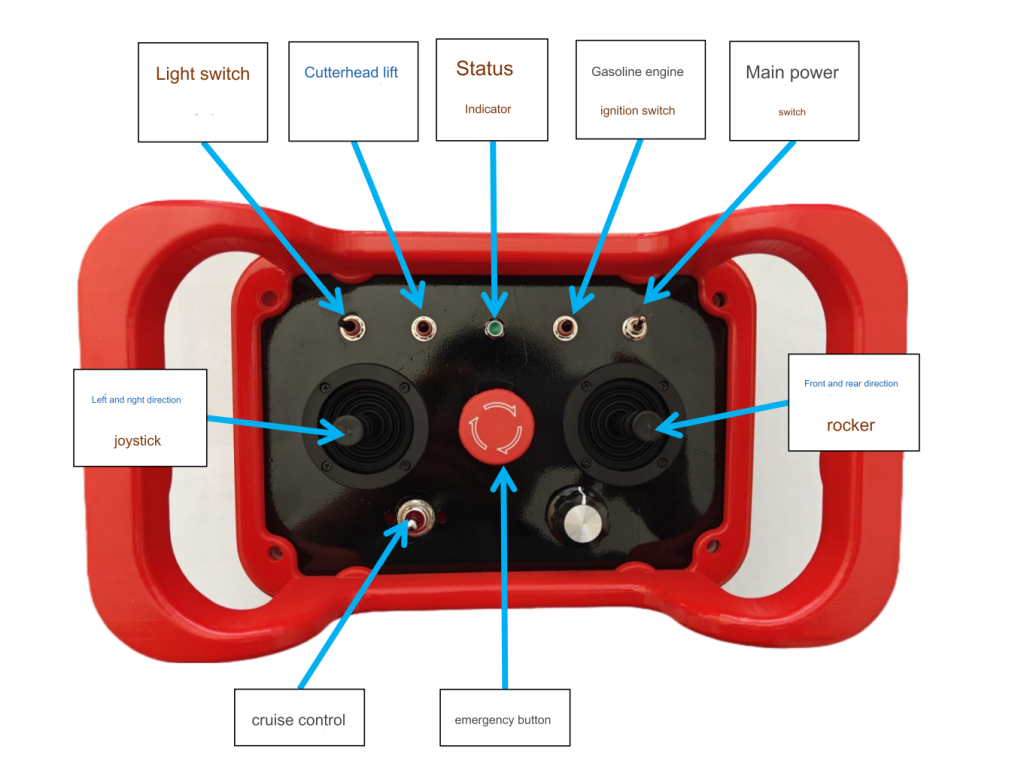Building an RC remote control lawn mower can be a complex project that requires knowledge of electronics, mechanics, and safety considerations. Here’s a basic outline of steps you might take if you’re attempting to build one:
Materials and Components Needed:
Lawn Mower Base:
- A conventional push mower or ride-on mower with a gas or electric motor.
RC Transmitter and Receiver:
- Choose a reliable RC transmitter and receiver set suitable for long-range control and with enough channels to control the mower’s functions (typically throttle and steering).
Motor Controllers:
- Electronic speed controllers (ESC) for controlling the mower’s motor speed and direction.
Actuators:
- Servo motors or linear actuators for controlling the mower’s steering mechanism if it’s not already electronically controlled.
Power Source:
- Batteries or a gas tank for powering the mower and the RC components.
Safety Features:
- Emergency stop button or kill switch to immediately cut off power to the mower.
Chassis Modifications:
- Depending on the mower type, you may need to modify the chassis to accommodate the additional electronics and to ensure stability.
Steps to Build:
Prepare the Mower:
- Select a suitable lawn mower. Ensure it’s in good working condition and capable of being modified.
Electronics Installation:
- Install the RC receiver and connect it to the throttle and steering mechanisms. Ensure all connections are secure and insulated to prevent interference and shorts.
Motor Control:
- Connect the ESCs to the mower’s motor(s) for speed control. Ensure the ESCs are rated for the voltage and current requirements of your mower’s motor.
Steering Control:
- If the mower’s steering is manual, you’ll need to retrofit it with actuators controlled by servo motors to enable remote steering.
Power System:
- Set up the power system (batteries or gas tank) to supply power to both the mower’s motor and the RC components. Ensure the power supply is adequate and safely integrated into the mower.
Testing and Calibration:
- Before full operation, test each component separately to ensure they function correctly. Calibrate the ESCs, servos, and radio system according to the manufacturer’s instructions.
Safety Considerations:
- Implement safety features such as an emergency stop mechanism. Ensure all exposed wiring is insulated and protected from water and debris.
Field Testing:
- Conduct initial tests in a controlled environment to ensure the mower responds correctly to remote commands and operates safely.
Fine-Tuning:
- Adjust the sensitivity and response of the controls as needed. Make sure the mower can handle various terrains and obstacles safely.
Legal and Safety Considerations:
Local Regulations: Check local regulations regarding the use of RC vehicles or modified machinery in public or private spaces.
Safety Gear: Always wear appropriate safety gear (gloves, goggles, etc.) when operating or testing the mower.
Risk Assessment: Assess potential risks associated with autonomous or remote-controlled operation and take appropriate precautions.
Building an RC remote control lawn mower requires significant technical skill and attention to safety. If you’re not experienced in electronics or mechanical modifications, consider seeking assistance from someone with expertise in these areas. Additionally, always prioritize safety in every step of the project.

